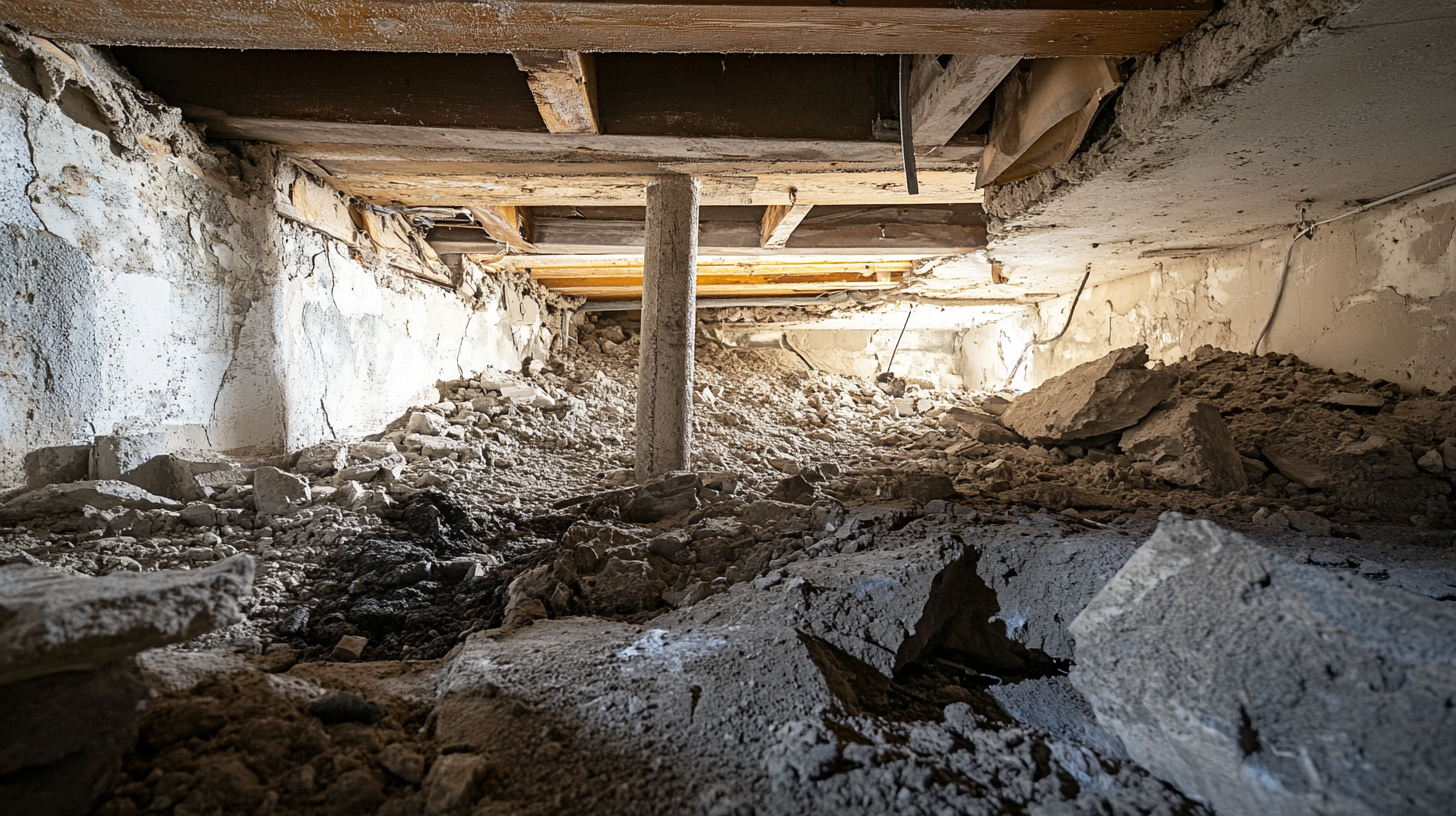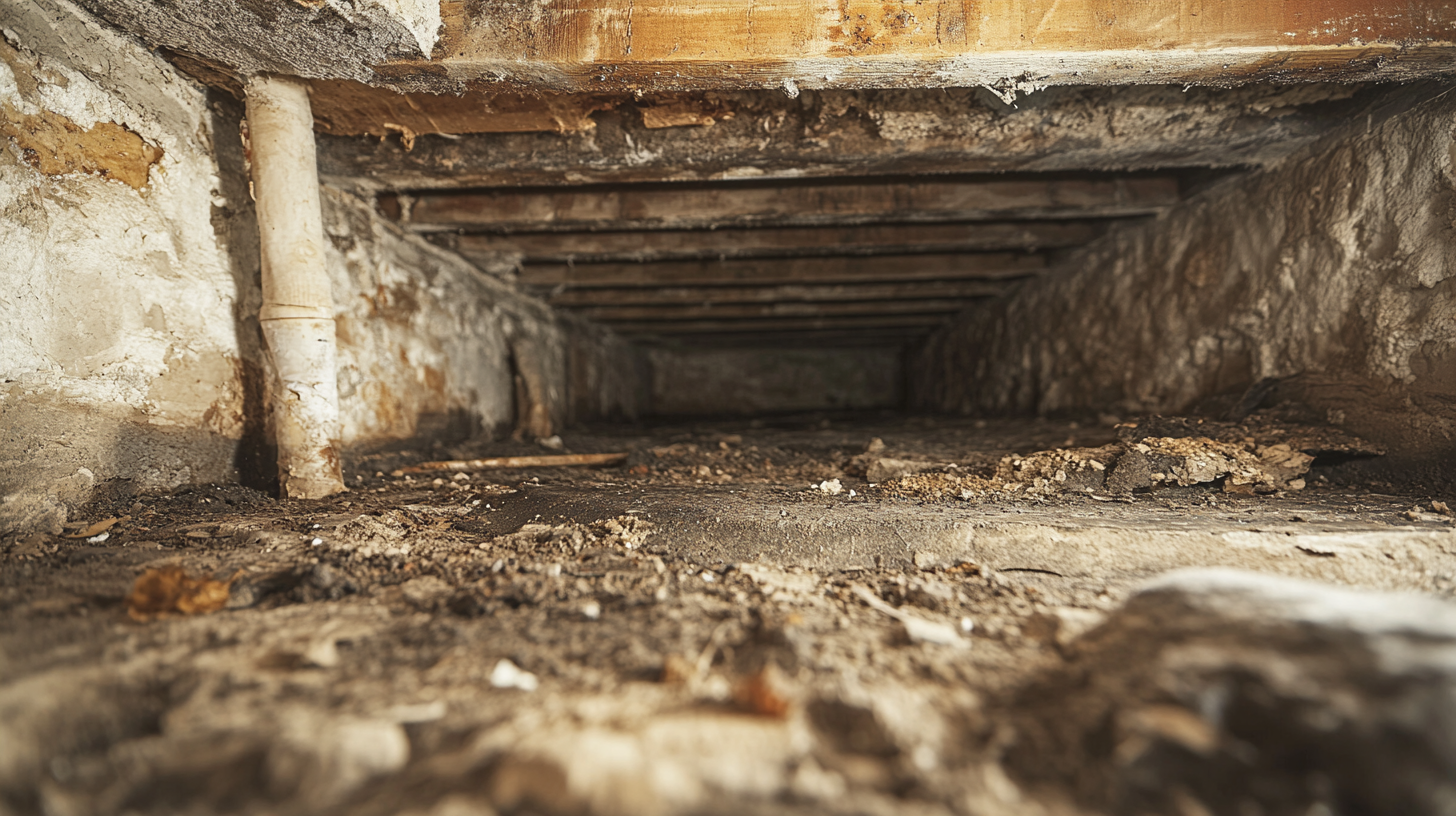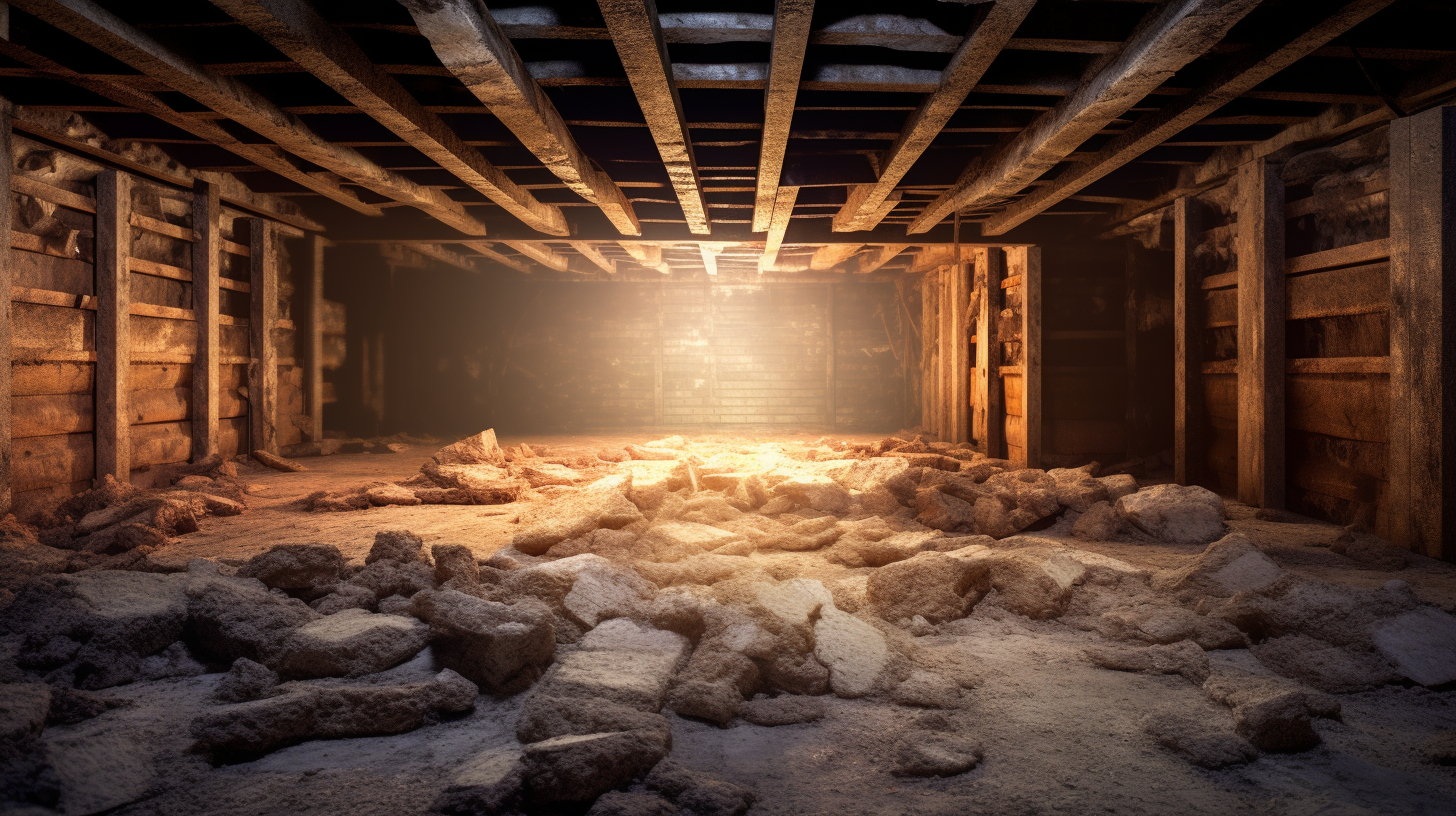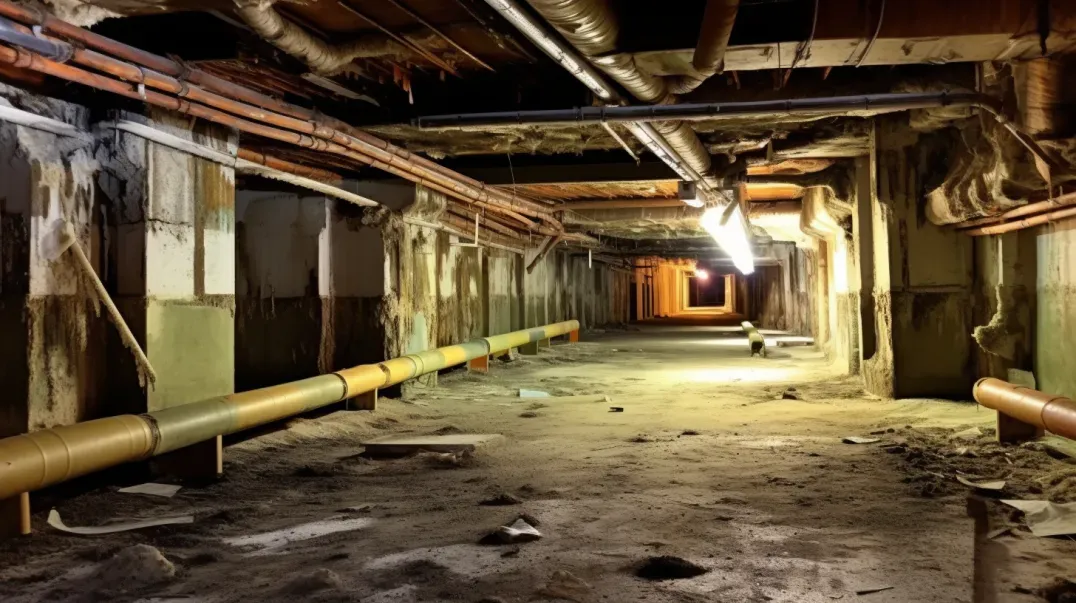Beneath the bustling life of our homes lies a critical yet often overlooked space that plays a pivotal role in our living environment's health and stability—the crawl space. This concealed area, hidden from daily view, holds the key to understanding many of the moisture-related challenges that homeowners face. At the heart of these challenges lies a single, pervasive factor: humidity. This blog delves deep into the significance of humidity in crawl space environments, unraveling how this seemingly innocuous element can wield considerable influence over the air quality, structural integrity, and energy efficiency of our homes.
Humidity in crawl spaces is a double-edged sword. On one hand, a certain level of moisture is natural and expected, especially in specific climates. On the other, excessive humidity can become a harbinger of myriad issues, from mold growth and wood rot to pest infestations and compromised air quality. Understanding the delicate balance of moisture levels and the dynamics of humidity in these hidden spaces is crucial for any homeowner looking to protect their investment and ensure a healthy living environment.
This exploration into the significance of humidity in crawl spaces will guide you through the mechanisms by which humidity affects your home's foundation and air quality. It will highlight the complex relationship between outdoor weather conditions, indoor climate control, and the unique microenvironment of the crawl space. By shedding light on the critical role that humidity plays, we aim to arm homeowners with the knowledge needed to take proactive steps toward monitoring, controlling, and optimizing the moisture levels beneath their feet.
Join us as we navigate the hidden world of crawl space humidity, uncovering the challenges it presents and the strategies for managing it effectively. Whether you're battling persistent dampness, seeking to prevent structural damage, or simply striving for a healthier home environment, understanding the significance of humidity in your crawl space is the first step on the journey to a drier, more stable, and comfortable home.
Humidity Basics
Understanding the fundamentals of humidity is crucial for homeowners looking to maintain a healthy, comfortable, and structurally sound living environment. Humidity, especially within crawl spaces, plays a significant role in influencing air quality, the integrity of building materials, and the overall well-being of a home. This guide delves into what humidity is, how it's measured, and the primary sources contributing to humidity levels in crawl spaces.
What is Humidity?
Definition and Explanation of Relative Humidity:
Humidity refers to the concentration of water vapor present in the air. Relative humidity, a term more commonly used in discussions about indoor air quality and weather forecasts, measures the amount of moisture in the air relative to the maximum amount of moisture the air can hold at a given temperature. Expressed as a percentage, relative humidity provides insight into how "humid" or "dry" the air feels. High relative humidity indicates that the air is nearly saturated with moisture, which can lead to feelings of stuffiness and discomfort indoors.
How Humidity is Measured:
Humidity is typically measured using a hygrometer, a device that provides readings of the air's moisture content. Modern hygrometers range from simple analog instruments to sophisticated digital sensors that can track changes in humidity over time, allowing for precise monitoring of indoor and outdoor environments.
Sources of Humidity in Crawl Spaces
Crawl spaces are particularly susceptible to humidity issues due to their proximity to the ground and the external environment. Understanding the sources of moisture can help homeowners take proactive steps to manage humidity levels effectively.
Natural Sources:
- Soil: Moisture from the ground can evaporate into the crawl space, especially if the area is not properly sealed or if a vapor barrier is absent or damaged.
- Air: Outdoor air that enters the crawl space through vents or gaps in the structure can contribute to increased humidity levels, particularly in regions with naturally high humidity or during certain seasons.
Human-Made Sources:
- Leaks: Water leaks from plumbing fixtures, pipes, or through the foundation can introduce significant moisture into the crawl space, raising humidity levels.
- Poor Ventilation: Inadequate ventilation can trap moist air within the crawl space, preventing the exchange of damp air with drier outside air. This is often compounded by heating and cooling systems that do not adequately circulate or dehumidify the air throughout the home.
By identifying and addressing these sources of humidity, homeowners can implement effective strategies to reduce moisture accumulation in crawl spaces, such as improving ventilation, repairing leaks, and installing vapor barriers. Managing humidity is essential for preventing mold growth, protecting structural materials, and ensuring a comfortable indoor environment.
The Impact of Humidity on Crawl Spaces
Humidity plays a pivotal role in the health and stability of crawl spaces, influencing everything from the structural integrity of the home to the quality of the air residents breathe. Excessive moisture in these areas can lead to a host of problems, making it crucial for homeowners to understand and manage humidity levels effectively. This guide explores the detrimental effects of high humidity on crawl spaces, including moisture-induced structural damage and the proliferation of mold and mildew, and their implications for indoor air quality and health.
Moisture and Structural Damage
How Excessive Moisture Affects Wood, Insulation, and Other Materials:
Excessive moisture in crawl spaces can have a profound impact on the materials that make up the foundation and structure of a home. Wood, widely used in framing and flooring, is particularly susceptible to moisture. High humidity levels can cause wood to warp, swell, or rot, compromising the structural integrity of the home. Insulation, another common crawl space material, can absorb moisture, reducing its effectiveness and potentially leading to the growth of mold. Metal components, such as ductwork and plumbing, are not immune to the effects of moisture either, with rust and corrosion being potential outcomes of prolonged exposure to high humidity levels.
Long-term Consequences of Unchecked Humidity:
The long-term consequences of unchecked humidity in crawl spaces extend beyond immediate material damage. Over time, the cumulative effects of moisture can lead to significant structural issues, including weakened floor joists, compromised foundation walls, and overall deterioration of the home's structural stability. These issues not only pose safety risks but can also result in costly repairs and decreased property value.
Mold, Mildew, and Air Quality
Health Risks Associated with Mold and Mildew:
Mold and mildew thrive in moist, humid environments, making crawl spaces with high humidity prime areas for their growth. Exposure to mold spores can lead to a variety of health problems, particularly for individuals with allergies, asthma, or compromised immune systems. Symptoms can range from mild allergic reactions, such as sneezing and itching, to more severe respiratory issues.
The Relationship Between Humidity, Mold Growth, and Indoor Air Quality:
The link between humidity, mold growth, and indoor air quality is undeniable. As mold and mildew proliferate in a humid crawl space, spores can be carried into living spaces through air circulation, impacting the overall air quality of the home. High indoor humidity levels can further exacerbate this issue, creating an environment conducive to mold growth within living areas themselves. Managing humidity levels in the crawl space is therefore essential not only for protecting the structure of the home but also for ensuring a healthy living environment.
Optimal Humidity Levels for Crawl Spaces
Maintaining the right humidity level in crawl spaces is crucial for preserving the structural integrity of your home, preventing mold growth, and ensuring a healthy living environment. But what constitutes the "right" level of humidity? This guide delves into understanding the ideal range for crawl space humidity, factors that influence this optimal level, and the tools available for homeowners to measure and monitor these levels effectively.
Understanding the Ideal Range
What the Numbers Say: Ideal Humidity Percentages:
The ideal humidity level for crawl spaces typically falls between 30% and 50%. Within this range, the risk of mold growth and structural damage due to moisture is significantly reduced. Keeping humidity levels below 60% is crucial, as higher percentages create conditions ripe for mold and mildew proliferation, which can lead to wood rot and compromise air quality.
Factors That Influence the Optimal Humidity Level:
Several factors can affect the ideal humidity level for a crawl space, including:
- Climate: Geographic location plays a significant role, as areas with high outdoor humidity levels may require more stringent moisture control measures.
- Seasonal Variations: Changes in season bring fluctuations in humidity levels, with warmer months typically seeing higher humidity both indoors and outdoors.
- Ventilation: The type and effectiveness of crawl space ventilation impact humidity levels, with better-ventilated spaces generally maintaining lower humidity.
- Water Intrusion: Sources of water intrusion, such as leaks or poor drainage around the foundation, can increase crawl space humidity beyond the ideal range.
Tools for Measuring and Monitoring Humidity
Hygrometers and Other Humidity Sensors:
Hygrometers are the primary tool used to measure humidity levels. These devices can range from simple analog units to advanced digital sensors that offer more precise readings. For comprehensive monitoring, homeowners can install humidity sensors that provide real-time data and even alert them when levels exceed predetermined thresholds.
Benefits of Continuous Monitoring:
Continuous monitoring of crawl space humidity offers several benefits:
- Early Detection: Identifying increases in humidity early can help homeowners address potential moisture sources before they lead to mold growth or structural damage.
- Seasonal Adjustments: Continuous data allows homeowners to adjust their moisture control strategies in response to seasonal changes, ensuring optimal humidity levels year-round.
- Peace of Mind: Knowing that crawl space humidity is being monitored and maintained within the ideal range can provide homeowners with peace of mind regarding the health and safety of their home.
Maintaining optimal humidity levels in crawl spaces is a key component of home maintenance that protects against moisture-related issues. By understanding the ideal humidity range and utilizing the right tools for measurement and monitoring, homeowners can effectively safeguard their homes from the risks associated with high humidity levels.
Managing Humidity through Ventilation
Effective humidity management is crucial for maintaining a healthy, comfortable, and structurally sound home environment. Excessive moisture can lead to a host of problems, including mold growth, wood rot, and compromised indoor air quality. Ventilation plays a pivotal role in controlling humidity levels, especially in critical areas like crawl spaces. This guide delves into various ventilation strategies and advanced solutions for humidity management, providing homeowners with the knowledge to protect their homes from the adverse effects of high humidity.
Ventilation Strategies for Humidity Control
Natural vs. Mechanical Ventilation:
- Natural Ventilation: This method relies on air movement through vents, windows, or other openings without the use of mechanical devices. It's most effective in areas with low outdoor humidity levels, where introducing outside air can help dilute and remove moist indoor air.
- Pros: Cost-effective and energy-efficient, as it does not require electricity to operate.
- Cons: Limited control over air flow and humidity levels, particularly in climates with high outdoor humidity or during extreme weather conditions.
- Mechanical Ventilation: Utilizes fans, vents, and other mechanical systems to control the flow of air in and out of the home. Mechanical ventilation can be tailored to specific needs, offering more precise control over humidity levels.
- Pros: Provides consistent ventilation regardless of outdoor conditions, allowing for better humidity control.
- Cons: Higher installation and operational costs due to energy consumption and the need for regular maintenance.
Pros and Cons of Different Ventilation Techniques:
Choosing between natural and mechanical ventilation involves considering the specific needs of your home, local climate, and budget. While natural ventilation can be a cost-effective option in certain environments, mechanical systems offer greater control and effectiveness in humidity management, albeit at a higher cost.
Advanced Solutions for Humidity Management
Dehumidifiers and Their Role in Crawl Space Environments:
- Dehumidifiers play a crucial role in managing humidity, especially in areas prone to excessive moisture, such as crawl spaces. By actively removing water vapor from the air, dehumidifiers can maintain optimal humidity levels, preventing the conditions that lead to mold growth and structural damage.
- Benefits: Precise control over humidity levels, improved air quality, and protection against moisture-related issues.
- Considerations: Requires electricity to operate and may necessitate regular maintenance, such as emptying water reservoirs or cleaning filters.
Integration of HVAC Systems with Crawl Space Ventilation:
- Integrating HVAC systems with crawl space ventilation offers a comprehensive approach to humidity management. This can involve directing conditioned air into the crawl space or using ductwork to circulate air more effectively.
- Benefits: Enhances overall ventilation and humidity control, improving comfort and air quality throughout the home.
- Considerations: May require professional installation and careful planning to ensure compatibility and effectiveness.
Managing humidity through ventilation requires a strategic approach, combining the right balance of natural and mechanical solutions with advanced humidity control technologies. By understanding the options available and their respective advantages and limitations, homeowners can implement effective strategies to maintain healthy humidity levels, protecting their homes and ensuring a comfortable living environment.
Preventative Measures and Best Practices
Maintaining a healthy and efficient crawl space is crucial for the overall well-being of your home. It not only prevents structural damage but also ensures a healthier living environment by mitigating issues related to excessive moisture, such as mold growth and poor air quality. This guide outlines essential preventative measures and best practices, including regular maintenance and inspections, as well as strategies for enhancing ventilation efficiency.
Regular Maintenance and Inspections
Checklist for Crawl Space Inspection:
- Visual Inspection for Water Damage: Look for any signs of standing water, water stains on walls or pillars, and rust on metal fixtures, which indicate moisture problems.
- Check for Mold and Mildew: Identify any visible mold or mildew growth on wood, insulation, or other surfaces, as this is a clear sign of excessive humidity.
- Inspect Ventilation Vents: Ensure that all vents are clear of obstructions and are adequately sized and positioned for effective airflow.
- Evaluate Insulation and Vapor Barriers: Check the condition of insulation and vapor barriers for any damage, gaps, or areas where moisture can penetrate.
Identifying and Addressing Early Signs of Humidity Issues:
Early identification and resolution of humidity issues are key to preventing long-term damage. Signs include musty odors, condensation on pipes or insulation, and increased indoor humidity levels. Addressing these signs may involve improving ventilation, repairing leaks, and ensuring that ground moisture is properly managed with vapor barriers.
Enhancing Ventilation Efficiency
Tips for Improving Airflow:
- Optimize Vent Placement: Ensure vents are strategically placed to facilitate cross-ventilation, allowing fresh air to enter from one side and exit through the opposite side.
- Use Mechanical Ventilation: Consider installing exhaust fans or dehumidifiers in areas where natural ventilation is insufficient to control humidity effectively.
- Clear Obstructions: Regularly remove debris, foliage, or stored items that could block airflow through vents.
Importance of Proper Insulation and Vapor Barriers:
- Insulation: Proper insulation in the crawl space helps maintain consistent temperatures, reducing the risk of condensation and moisture buildup. Ensure insulation is dry and properly installed without gaps.
- Vapor Barriers: Installing a high-quality vapor barrier on the crawl space floor prevents moisture from the ground from evaporating into the crawl space air. Ensure the barrier is intact and covers the entire ground surface.
Implementing these preventative measures and best practices can significantly contribute to maintaining a dry, well-ventilated crawl space. Regular maintenance and inspections, coupled with strategies to enhance ventilation efficiency, are key to preventing moisture-related issues and ensuring the structural integrity and air quality of your home.
FAQs
Contact Trench Guys Today!
Trench Guys will do everything we can to ensure your experience with us is excellent.
Request A FREE Estimate
Request a Free Estimate Form
Checkout Recent Post




Got a Question? We’re Here to Help.
You can arrange an appointment or make an enquiry by phone or email, orget in touch to us via our contact form.



